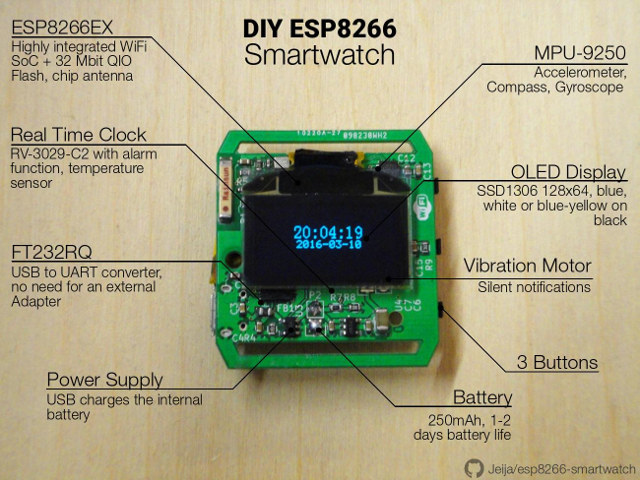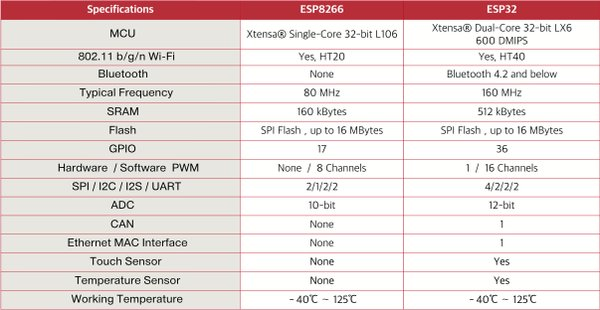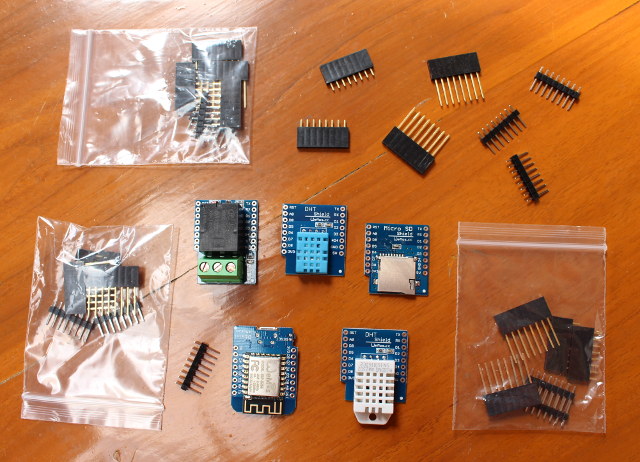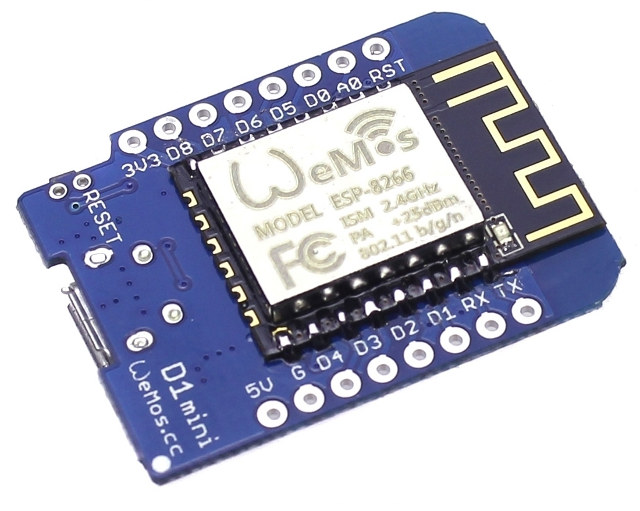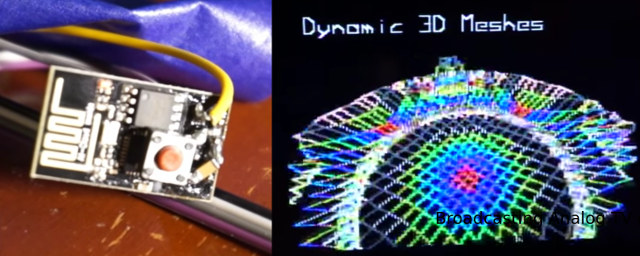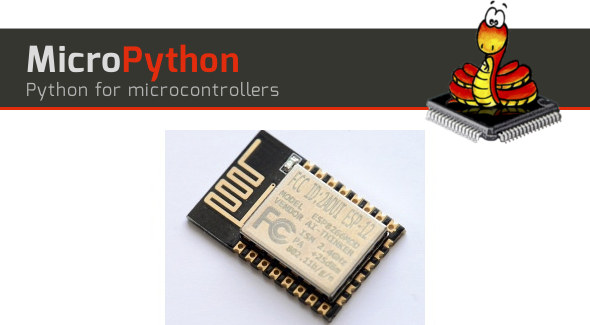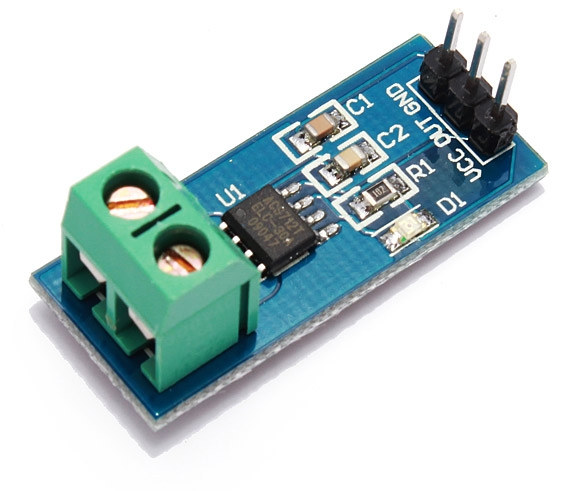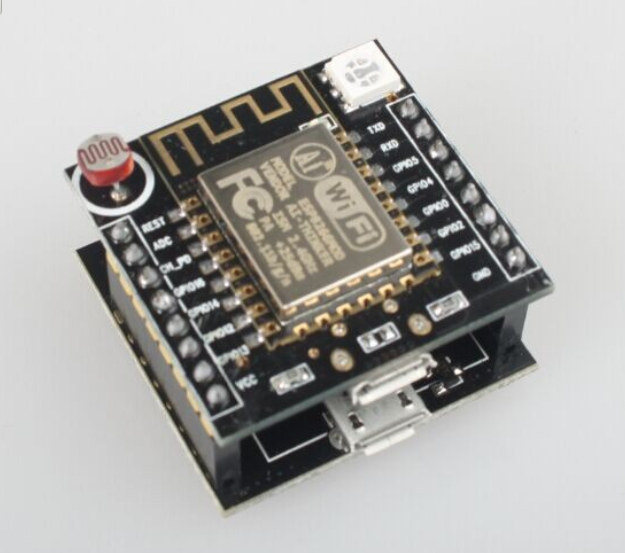ESP8266 might be the cheapest WiFi SoC for IoT application available, but it’s not really renowned for its power efficiency, and is often not considered the best choice for battery powered applications. This has not stopped Jeifa from developing a WiFi smartwatch based on the chip, and the 250 mAh battery used in the design is said to be good enough for 1 or 2 days of operation on a charge. Main components of Jeija’s ESP8266 smartwatch: SoC – Espressif ESP8266 with 32Mbit of flash memory Display – SSD1306 OLED Display, 128×64 resolution Connectivity – 802.11 b/g/n WiFi (via ESP8266) Sensor – Invensense MPU-9250 gyroscope, accelerometer, and compass Debugging / Programming – FT232RQ for USB communication Misc RV-3029-C2 Real Time Clock with alarm function, and temperature sensor 3x user buttons Vibration Motor Power 250mAh LiPo battery MCP73831 LiPo charger Dimensions – 35 x 39 x 11mm (board) He designed the […]
ESP8266 and ESP32 Differences in One Single Table
Espressif Systems ESP8266 is a very popular platform for IoT applications relying on WiFi, at least for hobbyists, while Espressif ESP32 is the new solution from the company that adds a CPU core, faster WiFi, Bluetooth 4.2, and various I/Os which should launch very soon. Amica.io released a table showing the main differences between the two processors which are expected to coexist in the market with ESP8266 used in the lower-cost segment, and ESP32 in applications requiring WiFi and Bluetooth, or some of the new interfaces. Some of the features were clearly listed when ESP32 was first announced, but for example, I was not aware that an Ethernet MAC, and a temperature sensor were built into the new SoC. Other interesting features for the new ESP32 processor include a touch sensor, and hardware PWM both of which are missing in ESP8266. The new dual-core processor also builds on existing features, […]
Getting Started with Wemos D1 mini ESP8266 Board, DHT & Relay Shields
Wemos D1 mini is an ESP8266 board that’s interesting thanks to its size, its low price ($4), micro USB power, its shields, and a documentation that looks fairly good. The board can be programmed with Arduino or Lua, and supports both serial and OTA programming. I’ve decided to give it a try and bought the board together with two temperature shields, a relay shield, and micro SD shield. I got all for $ 14.00 from Wemos Aliexpress shop, and it took about one month for delivery. I can also see they’ve recently released a new OLED shield selling for about $5. All shields were shipped inside their own anti-static bags. The pins are clearly marked on both side of the board and the shields. One side of the board features ESP8266 module. and the other side has CH340 serial to USB chip, and the reset button. The provided headers make […]
$4 Wemos D1 mini ESP8266 Board Supports Shields with a Temperature Sensor, a Button, a Relay, or a micro SD slot
Wemos D1 board, a $9 ESP8266 board in Arduino UNO form factor, now has a little brother with Wemos D1 mini. The board looks somewhat similar to NodeMCU with breadboard friendly I/Os on the sides and a micro USB port for power and programming, but what could make it more interesting, beside the $4 price tag, is that the company also developed several shields (aka add-on boards). Wemos D1 mini specifications: WiFi 802.11 b/g/n module based on ESP8266EX with 4MB flash Expansion – Through holes with 11x digital input/output pins (3.3V) supporting interrupt/PWM/I2C/one-wire (except D0) 1x analog input (3.3V max input) Reset and power signals (5V, 3.3V, GND) USB – micro USB port Misc – Reset button Power – 5V via micro USB or 5V pin Dimensions – 34.2 x 25.6 mm Weight – 10 grams The board is said to be compatible with Arduino IDE and NodeMCU firmware. ESP8266 […]
You Can Now Connect ESP8266 Module to Your Color Television (Sort of)
You can do lots of things with ESP8266 WiFi modules, but CNLohr did something rather unexpected as he managed to use GPIO3/RX pin to broadcast NTSC signals first in black & white, and now in color, to his television’s channel 3. On the hardware side, he did have to disconnect the WiFi antenna, and connected a wire antenna to GPIO3/RX pin. He then set I2S to run at 80 Mbps, and pushed data out using DMA buffers, so he could achieved the 61.25 MHz frequency required for NTSC luminance data, and the color data, 3.579MHz higher up. Once the demo is running, you can alter it on the fly using a web neat interface. This is all explained on channel3’s github repository, as well as one a 15-minute video showing the capabilities and limitations, and explaining how you can play around with the parameters. Via ESP8266COM’s Tweet. Jean-Luc Aufranc (CNXSoft)Jean-Luc […]
Bringing a Better Port of MicroPython to ESP8266 (Crowdfunding)
MicroPython is an lightweight implementation of Python 3 that runs on ARM Cortex-M micro-controllers such as STM32 or Texas Instruments CC3200, and since ESP8266 is so popular, work has started to port MicroPython on the Tensilica Xtensa LX106 based WiFi SoC. The current ESP8266 port comes with some API callss specific to ESP8266, but is quite basic, uses the execution model provided by Espressif, requiring callbacks to process WiFi requests, and doesn’t include support for many of the chip’s interface such as SPI, nor support WiFi fully. That’s why Damien George, the project lead, has launched a Kickstarter campaign to help fund development of the port, aiming to raise at least 6000 GBP (~$8,500 US). The goal is to develop “proper” Berkeley sockets for MicroPython on the ESP8266, in order to provide a true Python socket API to make development easier, optimize RAM usage, and implement the missing parts on […]
ACS712 Module Measures Currents up to 30A for as Low as $1 Shipped
Usually, if I buy a high power electric appliance, I like to double check it power consumption either with a Kill-a-watt when possible, and when not, e.g. cable directly hooked to the device or current intensity is too high, I use a digital electric clamp meter. Both methods are quite convenient as you don’t need to cut any wire to measure the current and determine the power consumption, but they don’t allow for data gathering since they don’t connect to the network. Earlier this week, I’ve come across a projects using ESP8266 for a mains energy monitor for a solar panel setup, and measuring mains current, electric meter, and gas meter. They use a photosensor to measure power consumption on their electric meter, which works, but may be problematic if the meter is on the street, and iSnail current sensor, using hall effect just like clamp meter, but instead of […]
$3 Compact ESP8266 Board Includes RGD LED, Photo Resistor, Buttons and a USB to TTL Interface
In case you need a cheap and compact ESP8266 board with integrated USB to TTL debug interface, a photo resistor, and/or some buttons, a white brand board based on ESP-12F could be interesting. “Witty cloud” development board specifications: ESP-12F module with Espressif ESP8266EX SoC Connectivity – WiFi 802.11 b/g/n 2x 8-pin headers with GPIOs, VCC, GND, Reset, ADC, and UART USB – 2x micro USB port (one for power, one for debugging ?) Misc – Photo resistor, RGB LED, three buttons for power, reset and firmware upgrade (I think) Dimensions – Small Witty cloud might not be the same of the board itself, but could be a cloud service launched in China, as some of the screenshot on Aliexpress could imply. All I could find are some websites vaguely mentioning GoKit 3.0 and Witty Cloud 3.0, but it does not make much sense. If Chinese readers could provide some insights […]


